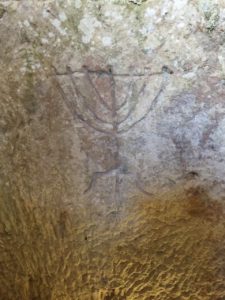The Secret History of the Jews of Malta

Valletta, Malta – This Passover, I’m in Malta shooting a documentary for National Geographic worldwide and Discovery Canada. Malta is a beautiful, small island country in the Mediterranean, 80 km south of Italy. Here, I discovered a practically unknown Jewish history. It is shrouded in the secrecy of the Inquisition, the Vatican’s mechanism established in 1542, for enforcing Christianity.
We sailed from Sicily to Malta. My journey into local history began as we entered the harbor of Valletta and I completed my morning prayers in Hebrew. The skipper looked at me and said; “I’m of Jewish descent. My family came from Spain in the 15th century, fleeing the Inquisition. When the Inquisition followed them to Malta, they converted to Christianity to avoid torture and death. My family name is ‘Ellul’, as in the Hebrew month.” I was amazed and thought that my skipper had a unique Maltese history. “Not so,” he said. “My story is quite common on the island.”
Indeed it is. I would venture that at least 30% of Malta’s 450,000 citizens are of Jewish descent. In the 13th century, there were 72 families on Malta, 25 of them were Jewish. To this day, Jewish family names such as Ellul, Zamit and Azzopardi dominate the island. Scholars call these forcibly converted Jews “Conversos,” “Maranos” or, in Hebrew, “Anusim.” But Jewish history on Malta did not start with them.
It seems that the first wave of Jews arrived in the 8th century B.C.E. as part of the so-called “Phoenicians.” The “Phoenicians” were what Greeks called Canaanites and Israelites, living along the coast of modern day Lebanon and Israel. Much of “Phoenician” archaeology in Malta seems to be Canaanite but there is an inscription on the floor of the south temple at Ggantija that has been deciphered by some as stating; “My father is YHWH” i.e., the God of Israel.
The first “Phoenician” tribe to populate Malta may have been the Israelite tribe of “Gad.” Today, Malta is made up of 3 islands; Malta, Gozo and Comino. The ancient name of Gozo was “Gaudos” which may have meant “The Island of the Gadites.”
In any event, by the 1st century, Jews were certainly on the island. The most famous incident of a Jew arriving here is the celebrated story of Saul, a.k.a. St Paul. According to the Acts of the Apostles (27:27-28:5), Paul was shipwrecked on the island around 60 C.E. Seeing an opportunity, Paul introduced the then Jerusalem based Jesus movement to the locals and established Christianity on Malta.
By the 3rd century, the Jewish community was flourishing. This past October, Heritage Malta opened up The Catacombs of St Paul and St Agatha. They are dated to the late 3rd and early 4th century. They are spectacularly well preserved and are at least as ancient as the more famous Catacombs of Rome. To my complete surprise, I found that these are the burial tombs of early Christians (some of whom were Jews) and Jews. It is incredible to see 1,600 year old painted and inscribed images of the Menorah, the holy candelabra that once graced the temple of God in Jerusalem. Most moving was the burial spot of a man and his wife. Between their heads, was a carved Menorah. For almost 2,000 years, while the limestone coffin’s cover was in place, this Menorah was invisible to the eyes of outsiders. It was a private prayer that this couple took to the grave – a belief that the Jewish people would be ingathered and that the temple would be rebuilt in Jerusalem.
Given this rich Jewish history, as anti-Semitism is once again rearing its ugly head with calls to marginalize, boycott and obliterate Israel, perhaps it’s time that the links between this member of the European Union and the Jewish people be strengthened and our common history be celebrated.
I’m leading an archaeological tour of Israel December 4-15. For more information about the tour, click here: http://samsontours.com/group-tours/1134-the-naked-archaeologist-israel-tour-2016

